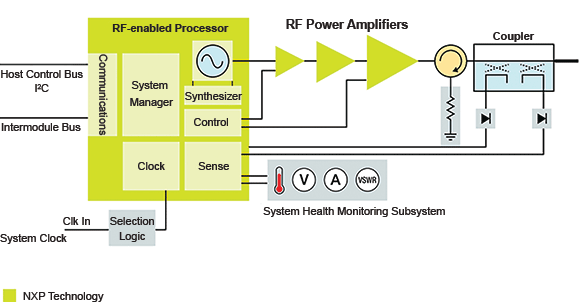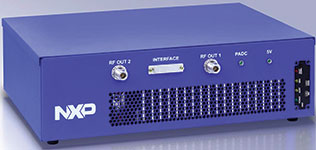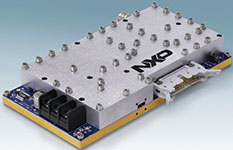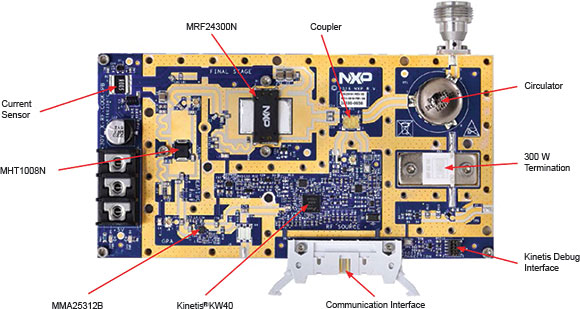
Microwave ovens are much-used appliances in many kitchens today. Used not only for cooking food from frozen but also for reheating last night’s curry or the cup of coffee you left to go cold, they provide a compact, quick and convenient method of defrosting and heating all manner of food and drinks.
Despite cosmetic enhancements such as replacing a mechanical clockwork timer with a touchscreen display, they appear largely the same as when they were first introduced back in the early 1950s. Not much has changed on the inside, either: the magnetron, now a 70-year-old technology, is still the primary energy source.
Over the years we have all suffered and learned to live with the limitations of using a magnetron as the energy source. Capable only of operating at full power and nothing else, it has been down to human ingenuity to improve its overall cooking performance and make it appear capable of operating at different power levels.
Without doubt the most frustrating aspect of heating food, either when cooking or defrosting, is the annoying hot spots the magnetron produces in the item being heated. This is purely a product of the frequency used, typically 2,45 GHz, and its phasing within the microwave’s cavity. Achieving uniformity of heating is probably the most annoying aspect of using a microwave oven, with some parts of the food typically being over-cooked and others under-cooked.
The use of ‘stirrers’ within the waveguide to the cavity, and a rotating base or ‘turntable’ have been moderately successful in distributing the energy around the cavity to provide a more uniform pattern. Providing different power output levels has been achieved by controlling the on/off duty cycle of the power to the magnetron.
For example, an 800 W oven, when operating at 100 W, will most like deliver the full 800 W for roughly 8 seconds and then remain off for 52 seconds before repeating. Heating large items of food also relies on thermal conduction, so the heating cycle needs to be long enough for that to happen and for the core to be heated to a hygienic and safe level.
Another aspect of the magnetron is that its microwave energy output degrades over time, with most of them losing as much as 30% of power output over a period of four years. In the home, most users do not notice this; however, for industrial food manufacturing processes this requires a regular replacement regime to be in place.
The magnetron is now about to be replaced with semiconductor alternatives in the form of RF power transistors. At first this appears to be a very basic step, but the consequences of this fundamental technology change open up exciting possibilities. It should also be noted that it is only recently that the design of RF power transistors and the associated process technologies of LDMOS and GaN have made this possible.
Magnetrons were able to accommodate large amounts of reflected power resulting from a mismatched ‘open’ cavity with dynamically changing load patterns as food changed state from uncooked (whether frozen or ambient) to cooked. By comparison, solid-state semiconductors were previously not robust enough to operate in this way, only operating with a matched load giving a voltage standing wave ratio (VSWR) approaching 1:1.
The semiconductor approach enables precise linear control of output power (amplitude) and frequency through digital circuitry. Also, rather than having just one output port as with a magnetron, multiple outputs or antennas can be used. This then permits control of the phasing between each output, and in so doing, helps with eliminating the hot spots during heating.
A digital control can also be used to detect the type of food to be cooked, by measuring the reflected energy, with this changing as food changes composition during heating. It is also possible, through phasing and frequency, to direct more energy to certain areas than others, opening up the possibility of heating, say, a chicken breast on the same plate as some mangetout, with both being cooked to perfection.
Such control allows more delicate foods to be cooked so that they retain moisture and nutrition, ensuring they remain tasty and healthy. In this way control sequences can be developed for popular meal types, and this concept is already gaining interest from manufacturers of prepared ready meals.
For example, Goji Food Solutions has pioneered the design of RF solid-state ovens that first scan the food in the oven to determine its volumetric and moisture properties before starting the cooking process. The oven then continues to monitor the food during cooking, adjusting amplitude, frequency and phase as necessary to achieve the best results.
When it comes to designing a solid-state oven, Figure 1 shows the principal components. Typically there will be two or four separate RF paths and antennas, with this approach giving most flexibility in terms of managing amplitude, frequency and phase. For a 1 kW oven, four 250 W outputs would be required.

This can easily be achieved through the use of four final-stage RF power transistors, such as the NXP MRF24300N device. Each transistor has a peak power output of 320 W when operating from a 32 V d.c. supply at 2450 MHz, and provides a 13 dB gain. Not only are such transistors considerably smaller than a magnetron, but they can also operate from relatively low voltages. By comparison a magnetron is bulky, heavy and requires a 3 kV supply, something that alone requires considerable space and isolation from other components.
To speed the process of prototyping a solid-state oven design, NXP has recently launched a series of development tools. These include the RFEL-500, a complete RF cooking lab in a single unit; the RFEM24-250, a single-channel 250 W output module; and the RFEP24-300, a 300 W pallet. All three units use the abovementioned MRF24300N RF power transistor in the final stage.
Comprised of two RFEM24-250 250 W RF modules, PC-based GUI software and data-logging capabilities, the RFEL24-500 – see Figure 2 – measures 33 x 43 x 13 cm and is a fully integrated fan-cooled RF development system for RF-based heating and cooking applications.

Capable of operating into unlimited VSWR loads, delivering up to 250 W per channel in the 2400 to 2500 MHz range, the NXP RF Energy Lab is ideal for both RF and non-RF engineers to test and prototype their oven concepts. Control is achieved by a USB to I²C interface to the two RF modules. The software provides complete control of the amplitude, frequency and phase of each output, in addition to featuring a frequency and phase-sweep function that helps with determining the best parameters to maximise energy transfer.

The RFEM24-500 – see Figure 3 – is a complete 250 W, 2,45 GHz RF subsystem. It features the signal source together with a three-stage RF amplifier, a Kinetis KW40 microcontroller, RF circulator and a 300 W termination load. The three-stage amplifier comprises an NXP MMA25312B, an NXP MHT1008N and an NXP MRF24300N. The RF circulator is a special RF component that serves to isolate the final-stage RF power transistor from reflected signals.
Output applied to port 1 appears at port 2, whereas anything applied to port 2 goes to port 3. In this case port 1 is attached to the RF output from the final stage via a coupler, port 2 is attached to the output socket (for connection to the oven cavity) and port 3 is attached to the 300 W on-board termination. Reflected signals coming back from the oven cavity end up being sensed for amplitude and terminated.
Figure 4 details the module inside the shielding and external heatsinks. Note the RF circulator at top right. Up to four RFEM24-500 modules can be synced up together. A suitable 30 to 32 V/500 W power supply is required, together with a means of cooling the module – typically thermostatically controlled fans and heatsinks.

For the more technically minded and experienced RF design engineer, the RFEP24-300 is an RF energy pallet that features a pre-driver and final-stage amplifier only.
The pallet is ideal as a base around which to prototype a complete RF front end. A software-controlled frequency source needs to be added, with sensors to detect both forward and reflected power and a microcontroller to control the pallet’s operation.
During CES 2018, NXP launched a complete defrost reference design solution, the NXP Smart Defrost Solution to further aid consumer appliance manufacturers in speeding the creation of the next generation of kitchen appliances. It won’t be long before we’ll start to see white goods manufacturers bringing designs to market based on this technology.
Watch out magnetron, your days are numbered!
For more information contact TRX Electronics, authorised Mouser independent representative in South Africa, +27 12 997 0509, [email protected], www.trxe.com
| Fax: | 0862 346 870 |
| Email: | [email protected] |
| www: | www.trxe.com |
| Articles: | More information and articles about TRX Electronics |
© Technews Publishing (Pty) Ltd | All Rights Reserved